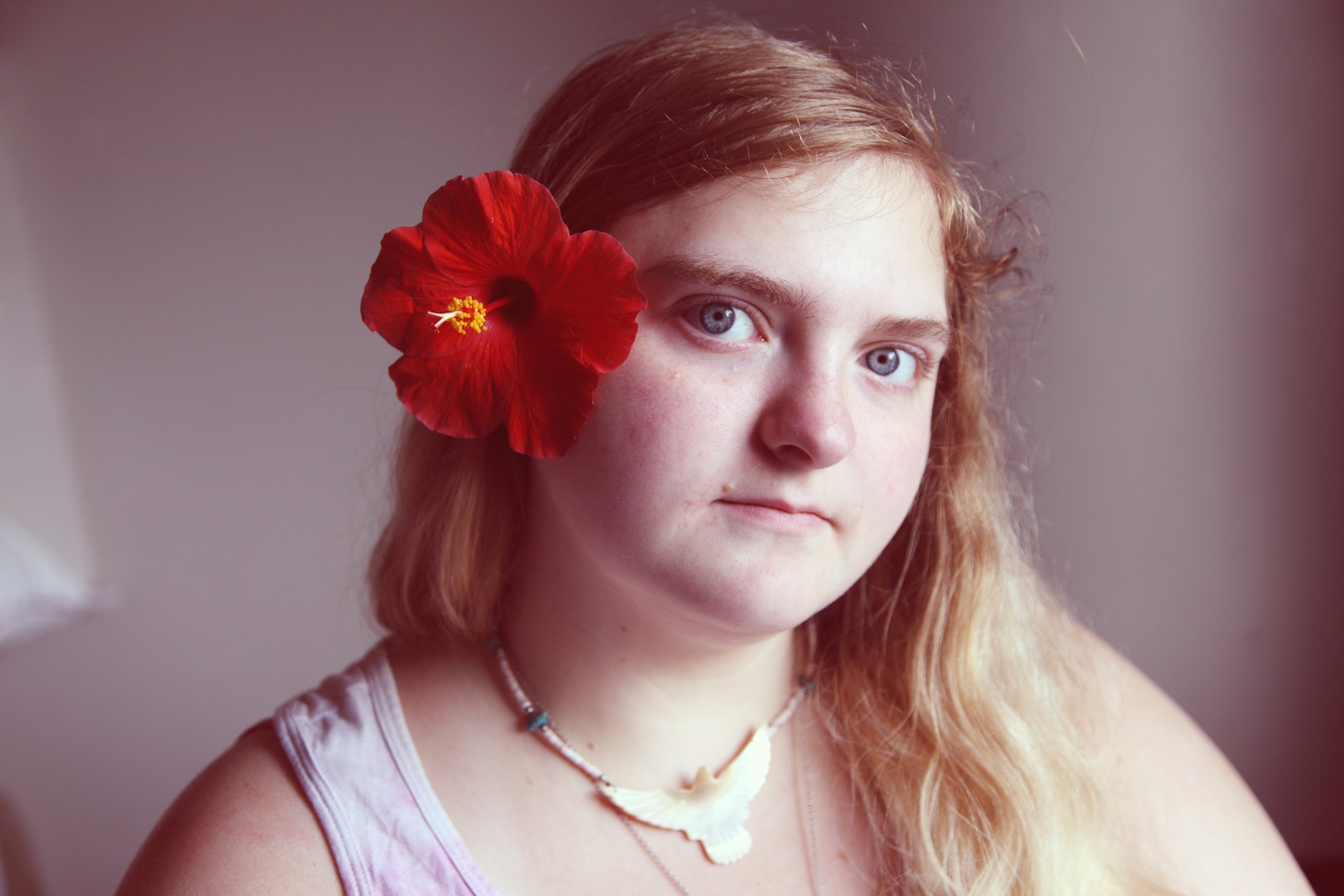Providing sexuality education for children with disabilities is an essential yet often overlooked aspect of their overall development. Just like their peers, children with disabilities have the right to learn about their bodies, emotions, relationships, boundaries, and sexual health. However, they may face unique challenges that require tailored approaches to ensure they receive age-appropriate, accurate, and accessible information.
Sexuality education for children with disabilities is crucial for their safety, self-esteem, and ability to form healthy relationships. It empowers them to understand their bodies, assert their boundaries, recognize inappropriate behavior, and make informed choices. This guide explores effective strategies, considerations, and resources to help parents, educators, and caregivers provide sexuality education to children with disabilities.
1. Understanding the Importance of Sexuality Education for Children with Disabilities
Sexuality education goes beyond teaching about reproduction and sex. It includes understanding one’s body, emotions, relationships, and social boundaries. Children with disabilities, like all children, deserve to understand these topics in a way that aligns with their developmental stage and individual needs.
Many children with disabilities, especially those with intellectual or developmental disabilities, may be vulnerable to exploitation or abuse due to a lack of knowledge about their bodies, boundaries, and the right to consent. Sexuality education plays a critical role in protecting them from harm, empowering them to advocate for themselves, and fostering their independence.
- Why It’s Important: Comprehensive sexuality education helps children with disabilities build self-confidence, understand healthy relationships, and develop appropriate boundaries. It also equips them to recognize and report any form of inappropriate behavior or abuse.
Key Benefits:
- Promotes body awareness and self-care.
- Enhances social skills and understanding of relationships.
- Encourages bodily autonomy and consent.
- Reduces vulnerability to abuse and exploitation.
- Supports emotional and psychological well-being.
2. Tailoring Sexuality Education to the Child’s Individual Needs
Each child is unique, and their needs, abilities, and comprehension levels vary widely. For children with disabilities, it is important to customize sexuality education to suit their cognitive, emotional, and physical development. A one-size-fits-all approach will not be effective, so consider the child’s specific disability, communication style, learning preferences, and social experiences when developing educational strategies.
For example, children with intellectual disabilities may need simple, concrete explanations and repetition, while those with physical disabilities may require education that addresses body autonomy and the importance of self-advocacy in relationships.
Why It’s Important: Tailoring education ensures that children with disabilities fully comprehend the information being taught and can apply it to their own experiences. This increases the effectiveness of the lessons and empowers them to make informed decisions.
How to Tailor Education:
- Use clear, simple language and visual aids for children with cognitive or developmental disabilities.
- Break down complex concepts into smaller, manageable lessons.
- Use repetition to reinforce learning.
- Encourage active participation by asking questions and checking for understanding.
- Involve trusted educators, therapists, or special education professionals to create individualized education plans (IEPs) that include sexuality education goals.
3. Start Early and Build Gradually
Sexuality education should begin early and evolve with the child’s age and developmental stage. For younger children, education may focus on body parts, appropriate touch, and understanding personal boundaries. As children grow older, topics like puberty, relationships, consent, and sexual health can be introduced in a way that aligns with their cognitive and emotional maturity.
Starting early allows children with disabilities to become comfortable with these topics over time, which can ease the transition into more complex discussions about sexuality, relationships, and consent during adolescence.
Why It’s Important: Starting early builds a foundation for understanding basic concepts like bodily autonomy, privacy, and appropriate touch, which can be expanded upon as the child matures. Early education can also prevent confusion, fear, or misinformation as the child approaches puberty.
How to Start Early:
- Teach proper names for body parts, emphasizing that all body parts are important and should be treated with respect.
- Introduce concepts of privacy and personal boundaries, such as when it is appropriate to be naked (e.g., in the bathroom or changing clothes).
- Discuss the difference between safe, comforting touch and inappropriate touch, empowering the child to say “no” if they feel uncomfortable.
- Gradually introduce the concept of consent, ensuring that the child understands they have control over their own body.
4. Teach Body Awareness and Personal Boundaries
Children with disabilities may have difficulty understanding personal space, boundaries, and the distinction between public and private behavior. Teaching these concepts early on can prevent potential misunderstandings or inappropriate behavior as they interact with others.
Helping children recognize their body’s boundaries and the boundaries of others promotes respect and helps prevent situations where they might feel uncomfortable or vulnerable.
Why It’s Important: Teaching body awareness and boundaries fosters respect for personal space and helps children distinguish between appropriate and inappropriate behavior. It also empowers children with disabilities to advocate for themselves and their right to consent.
How to Teach Personal Boundaries:
- Use visuals to explain the concept of “personal space,” showing that everyone has their own space bubble that should be respected.
- Teach children about “safe touch” (e.g., hugs from trusted people) and “unsafe touch” (e.g., touch that makes them feel uncomfortable or scared).
- Role-play scenarios to help children practice asserting their boundaries, such as saying “no” if someone tries to touch them without consent.
- Reinforce the idea that it’s okay to reject physical contact, even from trusted adults, if it feels uncomfortable.
5. Address Puberty and Body Changes Early
Puberty can be a confusing and overwhelming time for any child, and this is especially true for children with disabilities. Children with intellectual or developmental disabilities may have difficulty understanding why their bodies are changing or how to manage these changes, leading to anxiety or embarrassment. Providing early, clear, and compassionate education about puberty is essential.
Why It’s Important: Children with disabilities need to be prepared for the physical and emotional changes of puberty in order to understand their bodies and maintain proper hygiene. Early education also helps alleviate fears and misconceptions.
How to Address Puberty:
- Use age-appropriate, concrete language to explain puberty and body changes (e.g., growing breasts, body hair, menstruation, or voice changes).
- Teach personal hygiene habits, such as how to manage menstruation, body odor, and shaving, using step-by-step demonstrations if necessary.
- Normalize the feelings and emotions associated with puberty, offering reassurance that these changes are natural and part of growing up.
- For girls, explain menstruation with sensitivity, using visual aids or practice with sanitary products to ensure understanding. For boys, discuss erections and wet dreams in a straightforward manner.
6. Discuss Consent, Relationships, and Safe Behavior
Consent is one of the most important topics in sexuality education, especially for children with disabilities who may be vulnerable to manipulation or exploitation. Teaching children that they have control over their own bodies and have the right to say “no” to unwanted touch or interactions is key. This applies not only to sexual situations but also to everyday interactions, such as hugs, handshakes, or physical assistance.
As children grow older, education about healthy relationships becomes equally important. This includes understanding what constitutes a healthy friendship, romantic relationship, or partnership, as well as recognizing signs of inappropriate or abusive behavior.
Why It’s Important: Teaching consent and relationship skills helps protect children with disabilities from abuse and empowers them to make informed, safe decisions about relationships. It also promotes autonomy and self-respect.
How to Teach Consent and Safe Relationships:
- Use role-playing or social stories to practice saying “no” and setting boundaries in different situations.
- Teach the concept of mutual consent—that both people in a relationship must agree to any form of physical or emotional interaction.
- Discuss healthy and unhealthy relationships, helping children recognize behaviors like respect, trust, and communication in healthy relationships, versus control, manipulation, or abuse in unhealthy ones.
- Reinforce the message that consent can be revoked at any time, and that it’s important to trust one’s instincts about feeling safe or uncomfortable in any relationship.
7. Use Accessible and Engaging Resources
Children with disabilities may benefit from specialized resources, such as visual aids, videos, social stories, or tactile materials, to better understand sexuality and relationships. Many organizations provide inclusive sexuality education materials designed specifically for children with cognitive or developmental disabilities. These resources often break down complex topics into manageable lessons, using clear language, visual supports, and interactive components.
Why It’s Important: Using accessible resources ensures that children with disabilities fully comprehend the material and feel empowered to engage with the lessons. It also allows parents and educators to provide education in a format that aligns with the child’s learning style.
How to Find and Use Resources:
- Look for sexuality education materials that are specifically designed for children with disabilities, including books, videos, and websites. Organizations such as Planned Parenthood and Sexuality Information and Education Council of the United States (SIECUS) offer inclusive resources.
- Incorporate visuals, social stories, or hands-on activities to reinforce key concepts in a way that is engaging and memorable for the child.
- Adapt lessons to suit your child’s communication style, whether through speech, sign language, or augmentative communication devices.
8. Involve Trusted Educators and Therapists
Collaborating with educators, therapists, and healthcare providers can enhance the effectiveness of sexuality education for children with disabilities. These professionals can provide additional guidance, tailor educational plans, and offer specialized instruction for topics that may be more challenging for certain children. Teachers, especially special education teachers, can incorporate aspects of sexuality education into individualized education programs (IEPs), ensuring it becomes a part of the child’s overall development.
Why It’s Important: Engaging trusted professionals ensures that the child’s educational needs are met in a comprehensive and individualized manner. Educators and therapists can offer additional expertise, provide support with sensitive topics, and ensure that sexuality education aligns with the child’s cognitive and developmental stage. By incorporating sexuality education into individualized education plans (IEPs), it becomes an integral part of the child’s learning experience, ensuring consistency and reinforcement across different settings.
How to Involve Professionals:
- Work with your child’s special education teacher, speech therapist, or occupational therapist to create a plan that includes sexuality education in the child’s IEP.
- Consult healthcare providers or counselors to address specific concerns, such as emotional responses to puberty or managing relationships.
- Attend workshops or seminars on sexuality education for children with disabilities, which may be offered by local organizations, hospitals, or disability advocacy groups.
- Regularly communicate with professionals involved in your child’s care to ensure that all educational efforts are consistent and that your child’s progress is monitored.
9. Foster Open Communication and Trust
Creating an environment where your child feels safe to ask questions and express their feelings is vital to the success of sexuality education. Children with disabilities may have questions or concerns about their bodies, relationships, or emotions, and they need to know that it is okay to talk about these topics openly and without judgment. Fostering an ongoing dialogue allows parents to address concerns as they arise and ensures that the child feels supported throughout their development.
Open communication also helps children develop trust and confidence in their own understanding of sexuality, allowing them to make informed decisions as they grow. It’s important to listen to their thoughts, provide clear answers, and let them know that their feelings are valid.
Why It’s Important: Open communication builds trust, ensuring that children with disabilities feel comfortable discussing sensitive topics with their parents or caregivers. This ongoing dialogue helps prevent misunderstandings and promotes emotional well-being by validating their experiences and questions.
How to Foster Communication:
- Encourage your child to ask questions about their body, feelings, and relationships, and respond with honesty and clarity.
- Create a non-judgmental atmosphere by showing that all questions are welcome and that there is no shame in discussing these topics.
- Check in with your child regularly to see if they have any concerns or need clarification about the topics discussed.
- Be patient and willing to repeat information as needed, especially if your child requires additional time to process complex concepts.
10. Encourage Body Positivity and Self-Esteem
Children with disabilities may face unique challenges related to body image and self-esteem, particularly if they feel that their bodies are different from those of their peers. It’s important to promote body positivity and reinforce the message that all bodies, regardless of shape, size, or ability, are valuable and worthy of care and respect.
Positive reinforcement about their appearance, abilities, and individuality can help children with disabilities develop a healthy sense of self-worth. Emphasize that their bodies are their own, and they have the right to make decisions about how they are treated and by whom.
Why It’s Important: Promoting body positivity helps children with disabilities feel confident in themselves and reduces feelings of shame or insecurity about their bodies. This can improve their overall mental and emotional well-being and empower them to advocate for themselves.
How to Encourage Body Positivity:
- Use affirming language to describe your child’s body and abilities, emphasizing that all bodies are unique and valuable.
- Encourage your child to practice self-care, such as grooming and hygiene, to help them feel proud of their appearance.
- Reinforce the message that their body belongs to them and that they have the right to set boundaries around physical contact.
- Address any negative self-talk or body image concerns by providing reassurance and emphasizing their strengths and individuality.
11. Prepare for Adulthood and Sexuality
As children with disabilities approach adolescence and adulthood, their needs for sexuality education will evolve. For many young adults with disabilities, this transition may include questions about romantic relationships, sexual feelings, and their future independence. It’s essential to continue offering guidance and support during this time, addressing new topics such as dating, intimacy, contraception, and sexual health.
Parents may need to provide additional instruction on how to form healthy relationships, communicate effectively with romantic partners, and protect themselves from sexually transmitted infections (STIs) or unintended pregnancy. It’s also important to discuss consent in greater depth, ensuring that the young adult understands their rights and responsibilities in intimate situations.
Why It’s Important: As children with disabilities grow into young adults, they need clear, honest information about sexuality, relationships, and sexual health to navigate this new phase of life. Preparing them for adulthood helps foster independence, confidence, and the ability to make informed decisions.
How to Prepare for Adulthood:
- Discuss romantic relationships, dating, and sexual attraction in a way that is respectful of your child’s experiences and feelings.
- Provide accurate information about contraception, STI prevention, and safe sexual practices as your child matures.
- Encourage open discussions about intimacy and respect, ensuring that your child understands the importance of mutual consent in relationships.
- Seek out resources or professionals who specialize in sexuality education for young adults with disabilities to provide additional support.
Conclusion
Providing sexuality education for children with disabilities requires a thoughtful, individualized approach that respects their unique needs, developmental stage, and communication style. By tailoring the education to each child’s abilities, starting early, and fostering open communication, parents and educators can equip children with disabilities with the knowledge and skills they need to navigate their bodies, relationships, and emotions confidently and safely.
Sexuality education is not only about understanding sexual health; it’s about empowering children with disabilities to develop self-respect, set boundaries, and advocate for their own well-being. With the right resources, support, and guidance, children with disabilities can grow into informed, confident, and self-assured individuals, fully capable of making informed decisions about their bodies and relationships.




